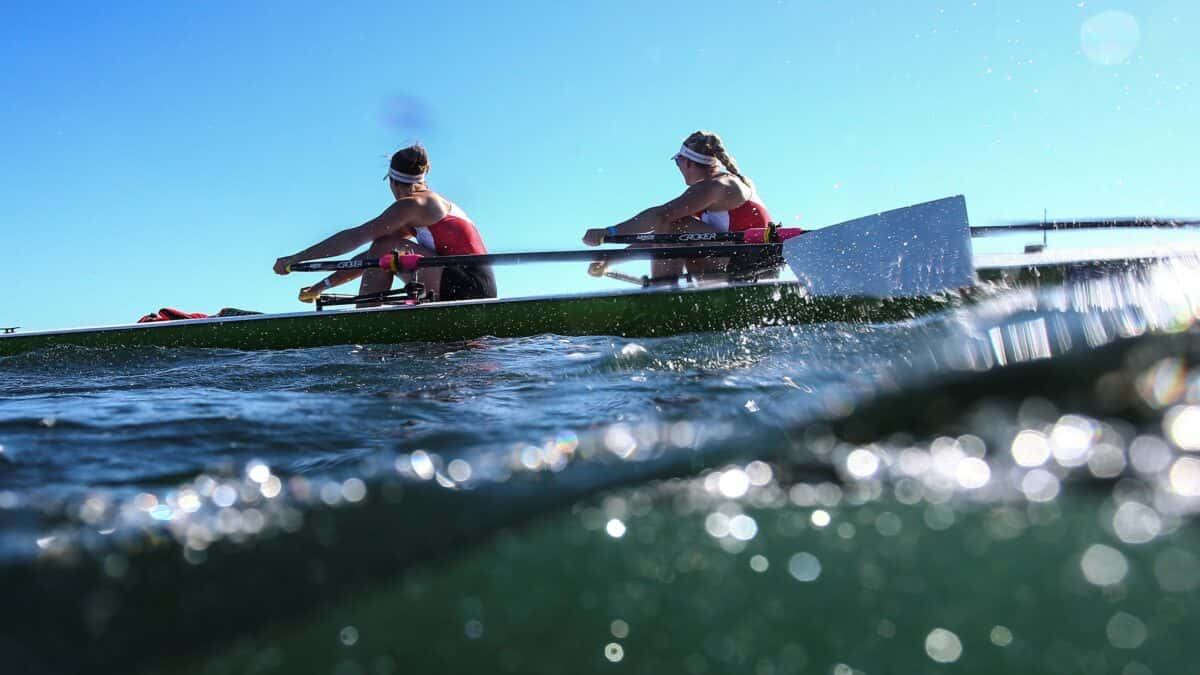
15 Feb 2019
How new rowers can stay healthy
Beyond being an enjoyable outdoor activity that offers an effective full-body workout, rowing is also a low impact form of exercise. This means that it can be a great way to maintain your fitness at any age. Rowing will keep your body strong, help you develop stamina and, if you keep at it, it is something you can enjoy well into your retirement years.
While it is true that the rowing motion does provide a good full-body workout and that it can have benefits for building stamina and endurance, new rowers should be aware to follow measures to stay healthy. Guest writer, physical therapist Alexandra Warner goes through some of these ways to stay healthy and get the most out of rowing.
Overuse
Overuse is one risk factor when it comes to rowing injuries. As rowing requires a repetitive movement, when starting out in the sport be aware that you may be using muscles that have not been used so much previously. If you are just starting out or you have been away from the sport for a while, it’s essential to build up your core strength and overall fitness in a systematic, gradual approach to prevent overuse.
Lower back pain
The amount of load or pressure put on the lower back, especially in terms of a repetitive motion, can put stress on the lower part of the spine. To prevent these injuries, athletes should start an exercise routine to strengthen and stabilise the body’s core. You should also work your way gradually into the sport or the training season. So make sure you are properly prepared before jumping in too quickly with too much quantity.
For a low back pain problem, the rower may feel some pain at the end of the rowing stroke when the oars is about to come out of the water. The pain may radiate down into the buttocks when the discomfort is the result of an injured disc.
If you happen to suffer a low back injury, you will need to stop rowing for a while as you rehabilitate the injury. Cross training is the best method to help rehabilitation then gradually work your way back into rowing as a regular activity. Here are some cross-training ideas: https://www.webmd.com/fitness-exercise/a-z/cross-training
Ribs
Rib injury is when there is a stress fracture to the ribs. This injury comes with soreness and tenderness along the rib cage. There may also be some pain when coughing or changing positions. These can go undiagnosed, so it is important to have your ribs checked out if you feel soreness. If you continue activities as normal, the injury could progress into an acute fracture.
One of the keys to preventing this type of injury is to avoid high-intensity training. You should also build an exercise regimen to strengthen your core, upper back and shoulders.
If this injury occurs, you should take a break from rowing and avoid activities like running. As the injury heals, you can start working out on a stationary bike. Once the rib starts to feel better, you can then move on to doing light work on the ergometer at low resistance levels.
Knees
A knee problem will usually come with some pain and swelling. There may also be a feeling of creaking or clicking when the knee flexes. For prevention, maintain strength in your legs and be sure to stretch before any workout.
If you feel pain in your knees it’s time to rest the joint. Your doctor may prescribe various stretching exercises to rehabilitate the knee. In addition, ice therapy can be helpful.
The wrist
The rowing motion can put stress on the wrists and training in cold weather can increase the risk. Extensor tenosynovitis is one of the wrist injuries rowers can develop. This injury occurs when the tendon sheath of an extensor tendon becomes inflamed.
To prevent this injury, rowers should wear long sleeves to cover the wrists when rowing in cold weather. You could also consider wearing wrist covers or athletic gloves that have coverage for the wrists.
Treatment involves wearing a wrist splint when you are not rowing. Your doctor may also recommend anti-inflammatory medications and ice as a treatment.
While any sport comes with a risk of injury, rowers can proactively avoid injury by understanding their limits, being aware of exterior conditions and easing themselves into their training.
Copy thanks to Alexandra Warner: https:/

